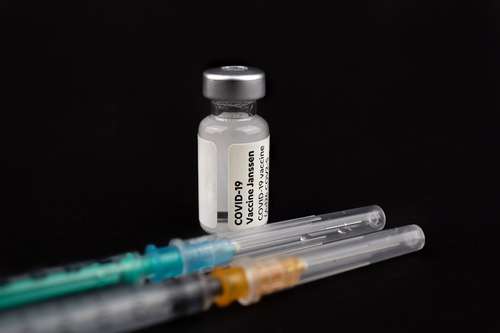Dysgeusia, or the loss or modification of taste, is a prevalent symptom of COVID-19. It's also a side effect of a number of illnesses and drugs, including Paxlovid, the new antiviral medication to treat COVID-19 infection.
Although it affects less than 6% of people who are administered Paxlovid, some people describe a "horrible" taste that began shortly after they began taking the medication.
A bitter, metallic, or sour taste on the tongue is defined as dysgeusia. But what is it exactly, and what happens in the body when it happens?
When we taste, what happens in our brain?
Aside from the pleasure we derive from eating delicious food, our sense of taste has other functions. Taste aids in the selection of foods, ensuring that we acquire enough nutrients and energy. It also aids in the digestion of the foods we've consumed.
Our sense of taste can also protect us from swallowing potentially harmful substances, such as toxins or spoiled food.
In the human mouth, there are around 10,000 taste buds, each with up to 150 taste receptors. Our taste buds have taste receptors that help us identify whether food is salty, sweet, bitter, sour, or umami.
Taste buds send information about what we're consuming to the brain via multiple neural routes.
Taste information is transferred to the brain stem at the base of the brain, then sent through related channels throughout the brain, eventually reaching the orbitofrontal cortex at the front.
This area connects to sensory areas and the limbic system that helps encode memory and emotion.
Three causes of dysgeusia
Dysgeusia can be caused by a number of things, including infection or sickness, medications, or impairment to the central nervous system.
-
Infection or disease
Taste changes have been recorded following influenza infection, hay fever, diabetes, heart disease, and other conditions.
COVID-19 is one of the most common causes of dysgeusia today, with loss of taste being one of the initial signs for many patients. According to research, dysgeusia affects between 33% and 50% of COVID-19 patients, albeit it is less common in newer forms. Long-term COVID has also been linked to this symptom.
COVID-19 and other infections cause dysgeusia, but scientists aren't sure why. Some current theories focus on how the SARS-CoV-2 virus, which produces COVID-19, initiates an inflammatory response in the mouth by attaching to receptors. This could modify taste by causing alterations in molecular and cellular pathways.
Because taste and smell are so closely linked, viral-induced damage to the nose lining may be enough to create taste problems.
Taste buds, nerves involved in taste, and brain areas responsible for taste sensory processing could all be affected by the infection.
-
Injury
Damage to the nerves and brain pathways involved in taste perception can also cause loss of taste.
This could be due to nerve or brain tissue injuries, or it could be related to the loss of the fatty myelin layer that helps insulate the taste signaling pathways. Dysgeusia can also be caused by brain tumors in rare situations.
-
Medications
Antibiotics, Parkinson's disease drugs, epilepsy treatment, and HIV medications all have a recognized adverse effect of dysgeusia.
[caption id="attachment_11023" align="aligncenter" width="746"]

Paxlovid continues to be recommended for early stage treatment of mild to moderate COVID-19 among persons at high risk for progression to severe disease.[/caption]
This could be due to a variety of factors. The drugs themselves may have a bitter taste that lingers in our mouths.
Medications can also stimulate taste receptors that perceive bitter, sour, or metallic flavors in ways that we don't usually experience with food.
Paxlovid, an antiviral medicine, is over 90% effective in lowering COVID-19 hospitalizations and deaths. Dysgeusia, on the other hand, is a common Paxlovid adverse effect.
Dysgeusia is known as "Paxlovid mouth" since it affects less than 6% of the population. The drug's brand name is Paxlovid. It consists of two drugs: nirmatrelvir and ritonavir.
Nirmatrelvir is the primary antiviral medicine used to treat COVID-19, and it is combined with ritonavir to prevent nirmatrelvir from being broken down too quickly, allowing it to stay active in the body for longer.
When used alone or in combination with other drugs, ritonavir has a bitter taste and induces dysgeusia. Despite the lack of research into the mechanism, ritonavir could be the cause of Paxlovid mouth.
Leaving a bad taste
Dysgeusia, while unpleasant, is usually temporary and should go away after the meds are done or the infection is resolved. People who have persistent changes in taste should get medical help to figure out what's causing them.
Lozenges, mints, and saltwater gargles may help with dysgeusia in the short term.
Although short-term dysgeusia is an unpleasant side effect of Paxlovid, it is a reasonable trade-off for reducing the severity of COVID-19 infection.
 Paxlovid continues to be recommended for early stage treatment of mild to moderate COVID-19 among persons at high risk for progression to severe disease.[/caption]
This could be due to a variety of factors. The drugs themselves may have a bitter taste that lingers in our mouths.
Medications can also stimulate taste receptors that perceive bitter, sour, or metallic flavors in ways that we don't usually experience with food.
Paxlovid, an antiviral medicine, is over 90% effective in lowering COVID-19 hospitalizations and deaths. Dysgeusia, on the other hand, is a common Paxlovid adverse effect.
Dysgeusia is known as "Paxlovid mouth" since it affects less than 6% of the population. The drug's brand name is Paxlovid. It consists of two drugs: nirmatrelvir and ritonavir.
Nirmatrelvir is the primary antiviral medicine used to treat COVID-19, and it is combined with ritonavir to prevent nirmatrelvir from being broken down too quickly, allowing it to stay active in the body for longer.
When used alone or in combination with other drugs, ritonavir has a bitter taste and induces dysgeusia. Despite the lack of research into the mechanism, ritonavir could be the cause of Paxlovid mouth.
Paxlovid continues to be recommended for early stage treatment of mild to moderate COVID-19 among persons at high risk for progression to severe disease.[/caption]
This could be due to a variety of factors. The drugs themselves may have a bitter taste that lingers in our mouths.
Medications can also stimulate taste receptors that perceive bitter, sour, or metallic flavors in ways that we don't usually experience with food.
Paxlovid, an antiviral medicine, is over 90% effective in lowering COVID-19 hospitalizations and deaths. Dysgeusia, on the other hand, is a common Paxlovid adverse effect.
Dysgeusia is known as "Paxlovid mouth" since it affects less than 6% of the population. The drug's brand name is Paxlovid. It consists of two drugs: nirmatrelvir and ritonavir.
Nirmatrelvir is the primary antiviral medicine used to treat COVID-19, and it is combined with ritonavir to prevent nirmatrelvir from being broken down too quickly, allowing it to stay active in the body for longer.
When used alone or in combination with other drugs, ritonavir has a bitter taste and induces dysgeusia. Despite the lack of research into the mechanism, ritonavir could be the cause of Paxlovid mouth.




